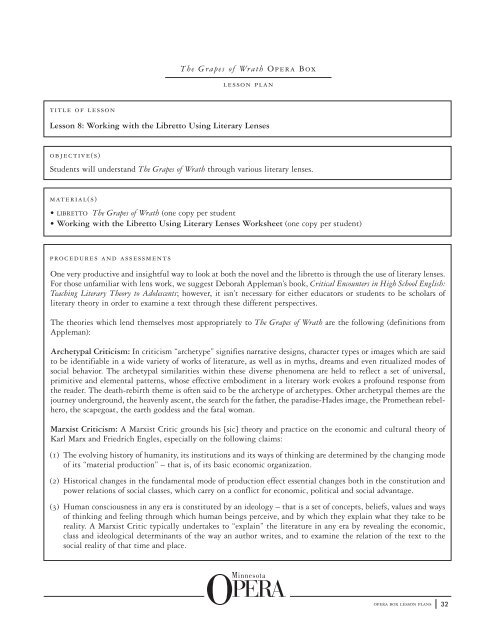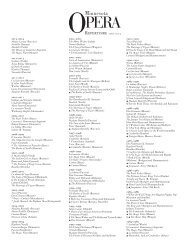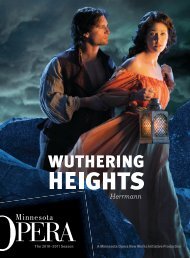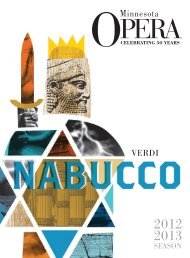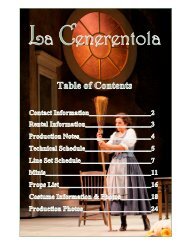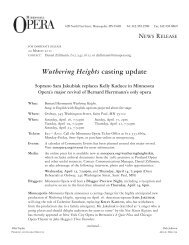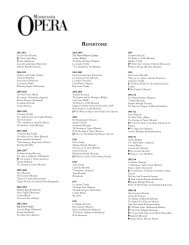Create successful ePaper yourself
Turn your PDF publications into a flip-book with our unique Google optimized e-Paper software.
The <strong>Grapes</strong> of Wrath <strong>Opera</strong> Box<br />
lesson plan<br />
title of lesson<br />
Lesson 8: Working with the Libretto Using Literary Lenses<br />
objective(s)<br />
Students will understand The <strong>Grapes</strong> of Wrath through various literary lenses.<br />
material(s)<br />
• LIBRETTO The <strong>Grapes</strong> of Wrath (one copy per student<br />
• Working with the Libretto Using Literary Lenses Worksheet (one copy per student)<br />
procedures and assessments<br />
One very productive and insightful way to look at both the novel and the libretto is through the use of literary lenses.<br />
For those unfamiliar with lens work, we suggest Deborah Appleman’s book, Critical Encounters in High School English:<br />
Teaching Literary Theory to Adolescents; however, it isn’t necessary for either educators or students to be scholars of<br />
literary theory in order to examine a text through these different perspectives.<br />
The theories which lend themselves most appropriately to The <strong>Grapes</strong> of Wrath are the following (definitions from<br />
Appleman):<br />
Archetypal Criticism: In criticism “archetype” signifies narrative designs, character types or images which are said<br />
to be identifiable in a wide variety of works of literature, as well as in myths, dreams and even ritualized modes of<br />
social behavior. The archetypal similarities within these diverse phenomena are held to reflect a set of universal,<br />
primitive and elemental patterns, whose effective embodiment in a literary work evokes a profound response from<br />
the reader. The death-rebirth theme is often said to be the archetype of archetypes. Other archetypal themes are the<br />
journey underground, the heavenly ascent, the search for the father, the paradise-Hades image, the Promethean rebelhero,<br />
the scapegoat, the earth goddess and the fatal woman.<br />
Marxist Criticism: A Marxist Critic grounds his [sic] theory and practice on the economic and cultural theory of<br />
Karl Marx and Friedrich Engles, especially on the following claims:<br />
(1) The evolving history of humanity, its institutions and its ways of thinking are determined by the changing mode<br />
of its “material production” – that is, of its basic economic organization.<br />
(2) Historical changes in the fundamental mode of production effect essential changes both in the constitution and<br />
power relations of social classes, which carry on a conflict for economic, political and social advantage.<br />
(3) Human consciousness in any era is constituted by an ideology – that is a set of concepts, beliefs, values and ways<br />
of thinking and feeling through which human beings perceive, and by which they explain what they take to be<br />
reality. A Marxist Critic typically undertakes to “explain” the literature in any era by revealing the economic,<br />
class and ideological determinants of the way an author writes, and to examine the relation of the text to the<br />
social reality of that time and place.<br />
opera box lesson plans 32


